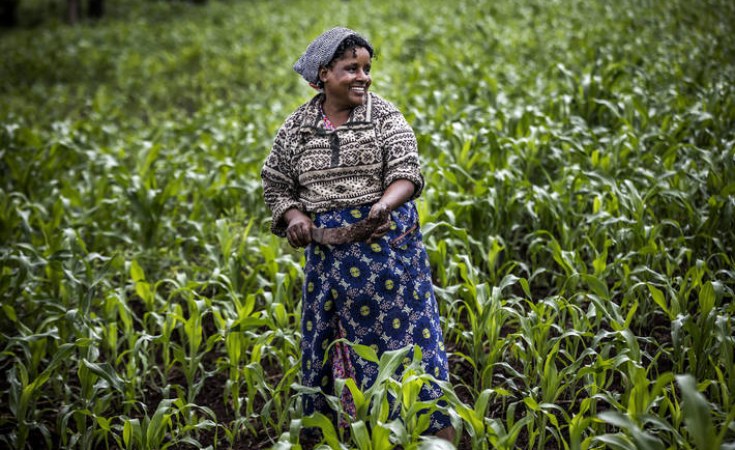Lending to agriculture, and the yield of major crops namely beans, maize, soybean are far from the attainment of Government's set targets under the National Strategy for Transformation (NST) due to come to an end next year, recent data indicate.
According to the 2021-2022 report by the Ministry of Agriculture, the midterm evaluation of NST1, indicates where the sector performed well vis-à-vis to the strategy targets by 2024, and also shows areas lagging behind that need special interventions.
These include productivity of major crops (beans, maize, soybean), agriculture loans, which were among low-performing indicators, the report observed.
The maize production target by 2024, was 2.94 tonnes per hectare, but the current status showed that the quantity for this crop was 1.6 tonnes, or 54 per cent of the envisaged amount.
For beans, production was even lower as it was 0.7 tonnes, or about 32 per cent of the targeted 2.22 tonnes by 2024.
Regarding Soya beans, production was 0.5 tonnes per hectare, or 39 per cent of the envisaged 1.28 tonnes.
Another area with low performance is the credit to agriculture sector as percentage of total loans provided by financial institutions in the country. The report revealed that while the targeted agriculture share of total loans is 10.4 per cent, it was just at 4.8 per cent - or less than half of the rate aimed at.
Marie Jeanne Ntirenganya, a farmer from Nyagatare District said that lack of quality seeds, and the hike in fertiliser prices were among the major challenges for farmers.
"Because of high fertiliser increase, and low-quality seeds, there is poor yields, which limits farmers' profit on their investment," she said, adding that drought also negatively affect farm productivity, especially on hillside farms where irrigation is too expensive.
While Rwanda targets a fertiliser use of 75 kilogramme per hectare by 2022 under the National Strategy for Transformation, the rate was 62.5 kilogrammes as of 2021-2022, implying that the performance versus the set target was 83 per cent.
Speaking to The New Times, Charles Bucagu, Deputy Director General in charge of Agriculture Development at Rwanda Agriculture and Animal Resources Development Board (RAB), said that factors which have been challenging crop productivity include climate change - in the form of drought and floods.
For instance, last month, Evariste Tugirinshuti, the president of the Federation of Maize Farmers' Cooperatives in Rwanda told The New Times that drought took its toll on crop production in 2022, estimating that overall, maize produce was expected to drop by 40 per cent as a result.
Bucagu said that the Government was responding to the low crop productivity issue with interventions such as scaling up irrigation efforts, and providing quality seeds to farmers.
He cited the variety of biofortified beans rich in iron and zinc that was distributed to the farmers in this farming season A of 2023 so that they get relatively high yields.
He also said that the Government provided free fertilisers to some farmers - for maize, soya and bean farming on consolidated agriculture land, and selected large farmland based on their potential to give high yields.
"We are being affected by climate change, but we are catching up so that we increase productivity," he said.
De-risking agriculture
Meanwhile, Bucagu said that the Government was investing in initiatives intended to increase irrigated area and developing marshlands in line with optimizing yields.
These, he said, include the Commercialisation and De-Risking for Agricultural Transformation Project (CDAT), the five-year initiative running through April 30, 2027, which was launched in September last year by the Government of Rwanda and the World Bank Group.
The project aims to commercialise and de-risk the agriculture sector in Rwanda through irrigation, insurance and affordable financing to farmers, among other interventions.
Bucagu said that CDAT will develop and rehabilitate irrigation systems on 17,673 ha.
"It's a strategy to mitigate climate change impacts such as drought and floods," he said.
Also, he said that the project will contribute to addressing the issue of banks that have been reluctant to lend to agriculture, hence raising credit level to the sector.
"Banks have been reluctant to lend to agriculture because of the risks in the sector including climate change, and unpredictable factors. This project comes to make agriculture projects safer for financing from banks," he said, indicating that the project will provide money to financial institutions that they will be lending to farmers at 8 per cent annual interest rate.
Also, he said, the project will insure the loans that the financial institutions will be giving to farmers, adding that the Government will work on ways to ensure that more loans are offered to farmers, even outside that project.


